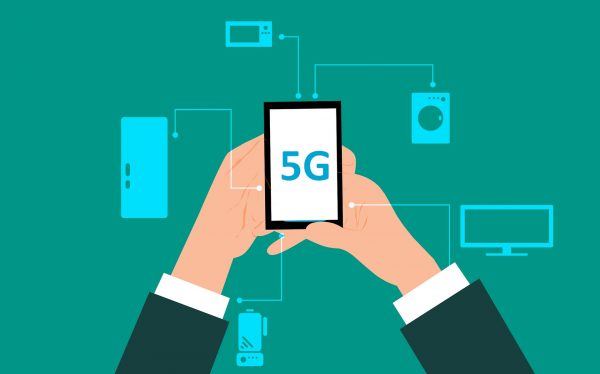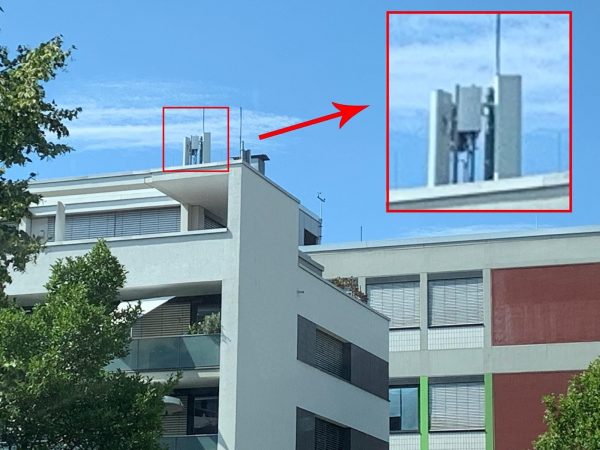When it comes to technology, speed begets speed—to the extent that it’s advancing faster than society can handle. With that said, before we even had a good grasp of the 4G network, the 5G cellular networks are already slowly making its presence into the dynamic market place. To fill in the gap of information, here’s everything you need to know about 5G networks.

What Is 5G?
Before you can fully understand what exactly 5G brings to the table, you must first understand what cellular or mobile network technology is. Generally, cellular network technology is a radio network distributed across the land that powers the cell with a transceiver at a fixed location. Devices that support data and voice communication can be connected using radio transmissions, and ultimately, making your communication wireless and remotely.
As its name suggests, 5G is the fifth generation of a cellular network. It is the up-and-coming generation of mobile connectivity that can augment 4G LTE connections and eventually replace them. With the evolvement, 5G promises faster internet speeds and more stable connections even in a wider coverage area. Besides, the time it takes to connect to servers will also drastically become faster.
The goal of 5G technologies, however, goes beyond merely serving mobile broadband. Instead, this evolvement strives for its goal by offering a wider range of applications. And that includes enhanced mobile broadband (eMBB), ultra-reliable and low latency communications (URLLC), massive machine-type communications (MMC), and fixed wireless access (FWA). Ultimately, even rural regions are able to access this technology at ease.
The Technology Behind 5G
Running on Three Different Spectrum Bands
Distinctively different from the rest, 5G utilizes three different radio frequency spectrums bands. And each spectrum band has its own pros and cons.
As previously mentioned, a consumer’s connection speed will vary depending on the spectrum they will use. For operators using the low-band spectrum, they can offer speeds that peak at 100Mbps. However, they have the best coverage among the three bands. The upshot? The signals can even penetrate into any physicals structure. So, buildings won’t be a hindrance to connectivity anymore.
Whereas in the mid-band spectrum, internet speeds can thrive to as much as 1 Gbps. However, the coverage and penetrating power of signals within this spectrum are noticeably lower than in the low-band spectrum.
Finally, the high-band spectrum, or millimeter wave (mmWave) spectrum, has similar problems to the mid-band spectrum. While it has connection speeds as fast as 10 Gbps, it also has trouble with small coverage and weak penetrating power. However, this spectrum is also the most underutilized at the moment, which gives providers a lot of room to work with.

Using Small Cells to Curb 5G’s Coverage Limitations
Most service providers of 5G plan on utilizing the high-band spectrum to operate their services specifically for its speed and the potential it brings. However, our current radio communications technology is underutilized. And because mmWave is not as crowded as other bands, it holds a lot of potential in terms of how many can use it.
While 5G users experience lightning-fast speeds and more data capacity to work with, operators can provide the service to more people since the band provides more service capacity. With the use of mmWave or the high-band spectrum, service providers will definitely come across a couple of drawbacks with the coverage and power to penetrate infrastructures. However, they’ve developed a backup plan in the form of 5G “towers” called small cells.
Instead of a few, gigantic signal towers, 5G will operate using smaller cells. These mini signal stations can be installed closer together in discreet places. They can be integrated into already-standing structures in an area, such as on lamp-posts or on the exterior of buildings. Installing many, unnoticeable signal stations closer together helps in solving the limitations 5G has in terms of coverage. It does so all while not compromising the speed and latency potential of this cellular network technology.
In Conjunction With 4G
Of course, once service providers roll out the latest network generation, it doesn’t mean that they’ll discontinue all previous-generation mobile networking tech immediately. To boost the coverage of 5G in its beginning stages, providers will run them in conjunction with 4G. While 4G helps fill in the gaps of the area coverage, 5G can, in turn, augment the quality of connections in 4G.
Also Read: 4G Vs 5G: Everything You Should Know

How Fast Is 5G?
The speed of a consumer’s 5G WiFi connection will depend greatly on which spectrum the service provider uses. These speeds can range from 100Mbps in the low-band frequency spectrum to 10 Gbps in the high band frequency spectrum. For example, the highest 5G speed test by Verizon was registered as fast as 1.4Gbps on certain locations. But some providers still may opt to operate at a mid-band frequency which only has speeds around 500-600Mbps.
When using 5G, consumers may expect a lower latency. Currently, the latency speed is registered at about 5-8 milliseconds. However, the target average of many providers is 4-5 milliseconds, with low latency peaks at 1-2 milliseconds.
How Can 5G Be Utilized?
Because technology is now a huge part of our daily lives, it’s hard to not find a way to use 5G. Thanks to its low latency and high-speed potential, the fifth network generation can make our lives easier in many various fields.
Better Healthcare
Advances in medical technology are also on a fast rise, and it becomes more reliable with the use of 5G. With the network’s ultra-reliable low latency communications (URLLC) feature, it opens up more possibilities in remote recovery, AR physical therapy, and even in AI-assisted robot technology. It even opens up the potential to make remote surgery an ultra-reliable option for patients around the globe. Besides, the 5G can also help in running medical establishments as it makes patient records monitoring and tracking way easier with faster network communication speed.
Future of Transportation
The service 5G provides opens up the possibility of autonomous vehicles in the near future. With low latency, commands to a self-driving car can be inputted remotely at lighting fast speeds. By all means, it’s possible for an autonomous car to communicate with other autonomous cars on the road. Accurate data communications, control inputs, and control timing provide all means for driverless cars to be made safe and efficient.
Public Service Efficiency
By using 5G to communicate, connect, and monitor an area, local governments can have the ability to run their respective cities or municipalities like a well-oiled machine. Response time to any emergency or public safety hazards can significantly become lower. Communication among departments can also become more efficient in times when it needs to be.
Internet of Things
Home assistants have become more prominent in recent years. With 5G, the Internet of Things can become vastly improved. For example, the accuracy of spoken commands can be heightened. Additionally, the processing and response times to these voice inputs can greatly be lessened. With advanced connectivity, smart devices can potentially do more than they already are.
Entertainment
The experience of using the internet for entertainment also greatly improved with 5G. Thanks to fast download and uploading speeds, as well as low latency, streaming videos in ultra-high definition (UHD) can be almost instantaneous. So, say bye to the forever loading pages and let’s welcome the true instant loading speed. With the use of fifth-generation networks, online gaming, as well as cloud gaming, is far smoother too.

Getting Better Broadband with 5G
While currently, 4G and LTE are also decent connectivity services, the reality is that service providers are running out of capacity. This is especially true in metropolitan and urban cities where more users in a smaller area use 4G or LTE.
Since 5G can operate on high-band spectrum frequency or mmWave, it has more capacity. This lets operators provide better broadband to more people in a limited area, greatly improving internet connectivity for users.
The most striking difference between 4G vs 5G is obviously their connection speed and latency. However, do not expect to experience speeds exponentially higher than 4G speeds upon 5G’s first few years of launch. During this transitional period, it seems providers aim to use 5G to augment their pre-existing 4G and LTE services. Eventually, though, the aim is to have 1Gbps connection speeds on average.
Are There Any Risks to Using 5G?
Health risk myths regarding cell phone connections have existed even earlier than the GSM network era. And similar to all the previous iterations of mobile network technology, a number of people think that there are many 5G dangers you need to look out for. A lot of people still believe that wireless connections pose a health risk to everyone who uses it. This comes from the belief that signal towers and devices using cellular network technology emit radiation that can cause many forms of diseases and complications.
But, similar to older mobile network technology, these 5G health risks are untrue. First, small cells and compatible devices don’t use radiation to communicate. Instead, they use radio signals in different frequencies to transmit data, and these signals are harmless. So, you don’t need to worry much about having small cells installed near your building. They’re there to improve your experience of connecting to our technologically advanced world.

When Is 5G Coming?
The roll-out timeframe of 5G has already started, with most countries launching it in 2019-2020. However, some have already made limited launches in late 2018 in some parts of the globe.
In South Korea, 5G had a limited launch on December 1, 2018, and the service had only been available to businesses. However, the formal public rollout in the country happened in April 2019 with the launch of the Samsung Galaxy s10 5G. After 69 days following the public launch, the country has announced that more than 1 million people are already using the service.
In the United States, some service providers such as Verizon, T Mobile, and AT&T have released 5G to a select few areas. However, the nationwide rollout for 5G technology is estimated to come between 2020 and as late as 2023.
Verizon first planned to launch its high-speed 5G connection in 30 cities in 2019. So far, only select cities currently enjoy the service. These Verizon 5G cities include Chicago, Denver, Atlanta, Detroit, Washington DC, and Phoenix, to name a few. Meanwhile, AT&T already provides 5G network services in 21 cities across the country, These include Dallas, Los Angeles, San Francisco, Las Vegas, and New York, among many others. Finally, T Mobile 5G is available in some areas in six cities: Atlanta, Cleveland, Las Vegas, Los Angeles, Dallas, and New York.
Compatible Devices
Understandably, there are not a lot of 5G phones out in the market right now. However, a few brands have offered some choices for consumers who want to take advantage of the latest mobile network right away.
Samsung’s Galaxy S10 is said to be the first smartphone capable of connecting to 5G networks. Since then, the electronics company has launched other phones with 5G compatibility. Huawei, Xiaomi, and ZTE are three phone brands that have launched or announced 5G-compatible phones. LG’s v50 ThinQ is also 5G-compatible.
Motorola’s Moto Z4, Z3, and Z2 phones, by themselves, are not 5G compatible. However, Motorola has since come out with a 5G modification you can attach to these phone models.
Meanwhile, Apple didn’t announce phones with 5G compatibility until the unveiling of the iPhone 12 series. That includes the mini, Pro, and Pro Max. The series, which was launched in October 2020, is the first to have 5G capability from Apple.
Also Read: 10 Best 5G Phones to Get
The Future of Mobile Networks
There is a widely known saying that the only thing constant in the world is change, and this is true even in our technologically advanced world. Now, there’s no stopping the evolution and progress of technology.
For many years, 4G networks have served the mobile-using world well, but eventually, we need to adopt the more advanced 5G networks to keep up. It’s the technology used for good as it makes our lives a little bit easier.
